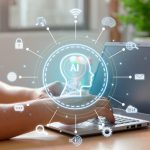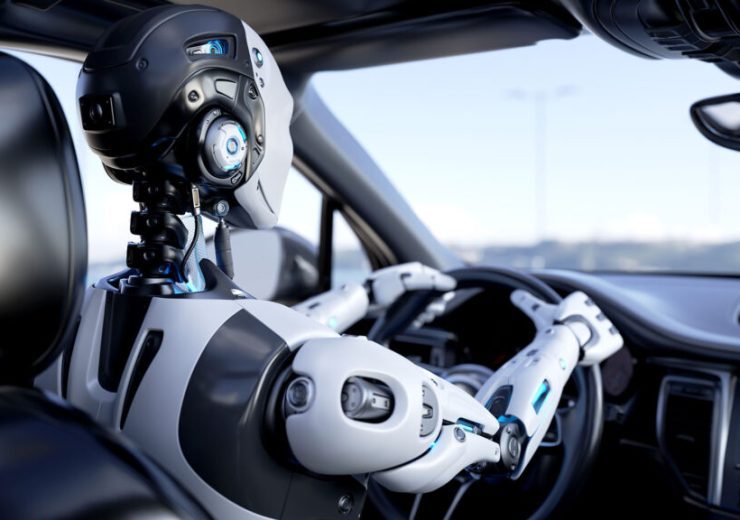50 Most Frequently Asked Questions About AI

Artificial Intelligence (AI) is a fascinating and rapidly evolving field that has captured the imagination of many. From science fiction to real-world applications, AI is shaping the future in numerous ways. Here, we’ve compiled 50 of the most frequently asked questions about AI, providing clear and concise answers to help you understand this complex subject better.
1. What is AI?
AI, or Artificial Intelligence, refers to the simulation of human intelligence in machines that are designed to think and act like humans. This includes tasks such as learning, reasoning, problem-solving, and understanding language.
2. How does AI work?
AI works by using algorithms and large amounts of data to identify patterns and make predictions. Machine learning, a subset of AI, involves training algorithms on large datasets to improve their performance over time.
3. What are the different types of AI?
AI can be categorized into three main types: Narrow AI, which is designed for specific tasks; General AI, which has human-like cognitive abilities; and Superintelligent AI, which surpasses human intelligence (currently theoretical).
4. What is machine learning?
Machine learning is a subset of AI that focuses on developing algorithms that enable computers to learn from and make decisions based on data. It involves training models on large datasets to recognize patterns and improve over time.
5. What is deep learning?
Deep learning is a subset of machine learning that uses neural networks with many layers (hence “deep”) to analyze data and make complex decisions. It’s particularly effective for tasks like image and speech recognition.
6. How is AI used in everyday life?
AI is used in various everyday applications, such as virtual assistants (like Siri and Alexa), recommendation systems (like Netflix and Amazon), fraud detection, personalized marketing, and even autonomous vehicles.
7. What are the ethical concerns surrounding AI?
Ethical concerns include issues of privacy, bias in AI algorithms, job displacement due to automation, and the potential for AI to be used in harmful ways. Ensuring ethical AI involves addressing these challenges through careful regulation and responsible development.
8. Can AI replace human jobs?
AI has the potential to automate certain tasks, which could lead to job displacement in some sectors. However, it also creates new opportunities and roles that require human skills, particularly in areas involving creativity, complex decision-making, and emotional intelligence.
9. What is the difference between AI and automation?
AI involves creating systems that can perform tasks requiring human intelligence, such as learning and problem-solving. Automation refers to using technology to perform repetitive tasks without human intervention. AI can enhance automation by making it more adaptive and intelligent.
10. What is natural language processing (NLP)?
Natural Language Processing (NLP) is a branch of AI that focuses on enabling machines to understand, interpret, and generate human language. Applications include language translation, sentiment analysis, and chatbots.
11. What is computer vision?
Computer vision is a field of AI that enables computers to interpret and make decisions based on visual data, such as images and videos. It’s used in applications like facial recognition, autonomous vehicles, and medical image analysis.
12. What is reinforcement learning?
Reinforcement learning is a type of machine learning where an agent learns to make decisions by taking actions in an environment to maximize cumulative rewards. It’s used in applications like robotics, gaming, and self-driving cars.
13. How is AI used in healthcare?
AI is used in healthcare for tasks such as diagnosing diseases, predicting patient outcomes, personalizing treatment plans, and managing healthcare records. It can improve efficiency and accuracy in medical processes.
14. What is an AI algorithm?
An AI algorithm is a set of rules and calculations that enable machines to learn from data and make decisions. These algorithms can be trained on large datasets to improve their performance in tasks like prediction and classification.
15. Can AI learn on its own?
AI can learn on its own through processes like machine learning and reinforcement learning. These methods allow AI systems to improve their performance by identifying patterns in data and learning from feedback.
16. What are neural networks?
Neural networks are a type of AI model inspired by the human brain. They consist of layers of interconnected nodes (neurons) that process data and learn to make decisions. Deep learning models often use complex neural networks.
17. What is an AI model?
An AI model is a trained system that can make predictions or decisions based on data. It is developed using algorithms and training data to learn patterns and relationships, which it uses to generate outputs for new inputs.
18. How does AI impact privacy?
AI can impact privacy by collecting and analyzing large amounts of personal data. This raises concerns about data security, consent, and how information is used. Ensuring privacy requires robust data protection measures and transparent practices.
19. What is a chatbot?
A chatbot is an AI program that can simulate conversation with users. It’s used in customer service, information retrieval, and personal assistance, providing responses based on pre-defined rules or natural language processing.
20. What are AI ethics?
AI ethics involves the study and implementation of responsible practices in AI development and use. It addresses issues like fairness, transparency, accountability, and the impact of AI on society, aiming to ensure technology benefits all.
21. How is AI used in finance?
AI is used in finance for tasks like fraud detection, algorithmic trading, risk management, and customer service. It helps analyze large datasets to identify trends, make predictions, and automate decision-making processes.
22. What is supervised learning?
Supervised learning is a type of machine learning where an algorithm is trained on labeled data. The model learns to map inputs to outputs based on this data, improving its accuracy in predicting outcomes for new, unseen data.
23. What is unsupervised learning?
Unsupervised learning involves training algorithms on data without labeled outputs. The model identifies patterns and relationships within the data, often used for clustering, anomaly detection, and dimensionality reduction.
24. How does AI impact the environment?
AI can impact the environment both positively and negatively. It can optimize energy use and reduce waste, but training large AI models requires significant computational power, contributing to energy consumption and carbon emissions.
25. What is transfer learning?
Transfer learning is a machine learning technique where a model trained on one task is repurposed for a different but related task. It allows for faster and more efficient training by leveraging existing knowledge.
26. How is AI used in education?
AI is used in education for personalized learning, automating administrative tasks, and enhancing teaching through intelligent tutoring systems. It helps tailor educational experiences to individual student needs and improve learning outcomes.
27. What is the Turing Test?
The Turing Test, proposed by Alan Turing, is a measure of a machine’s ability to exhibit intelligent behavior equivalent to or indistinguishable from that of a human. If a machine can successfully mimic human responses, it passes the test.
28. How is AI used in marketing?
AI is used in marketing for customer segmentation, personalized advertising, and predictive analytics. It helps businesses understand customer behavior, optimize campaigns, and improve engagement through targeted content.
29. What is a neural network?
A neural network is a computational model inspired by the human brain. It consists of interconnected nodes (neurons) that process information in layers, allowing the network to learn patterns and make predictions from data.
30. Can AI create art?
Yes, AI can create art. AI models, such as generative adversarial networks (GANs), can produce paintings, music, and other creative works by learning from existing datasets. AI-generated art is becoming increasingly sophisticated.
31. How does AI impact security?
AI impacts security by enhancing threat detection, automating responses, and identifying vulnerabilities. However, it also poses risks, such as AI-driven cyberattacks. Balancing AI’s benefits and threats is crucial for effective security.
32. What is explainable AI (XAI)?
Explainable AI (XAI) refers to AI systems designed to provide understandable and interpretable results. It aims to make AI decisions transparent, allowing users to trust and understand how the AI arrives at its conclusions.
33. How is AI used in transportation?
AI is used in transportation for autonomous vehicles, traffic management, and predictive maintenance. It enhances safety, reduces congestion, and improves efficiency in logistics and transportation networks.
34. What are AI-powered virtual assistants?
AI-powered virtual assistants, like Siri, Alexa, and Google Assistant, use natural language processing to interact with users, answer questions, and perform tasks. They are widely used for personal assistance and smart home management.
35. What is the role of data in AI?
Data is crucial for AI as it provides the information needed to train and test models. High-quality, large datasets enable AI systems to learn patterns, make accurate predictions, and improve their performance over time.
36. How is AI used in entertainment?
AI is used in entertainment for content recommendation, video game design, and special effects. It helps personalize user experiences, create realistic virtual environments, and automate production processes in the industry.
37. What is AI bias?
AI bias occurs when an AI system produces prejudiced results due to biased data or algorithms. It can lead to unfair treatment and discrimination. Addressing AI bias involves ensuring diverse and representative datasets and transparent algorithm design.
38. What is the Singularity in AI?
The Singularity refers to a hypothetical future point where AI surpasses human intelligence, leading to rapid technological advancements and potentially unpredictable consequences. It’s a topic of debate and speculation among experts.
39. How does AI impact the economy?
AI impacts the economy by driving innovation, increasing productivity, and creating new markets. However, it also raises concerns about job displacement and economic inequality, requiring policies to manage these challenges effectively.
40. What are AI ethics guidelines?
AI ethics guidelines are frameworks developed by organizations to ensure the responsible use of AI. They address principles like fairness, transparency, accountability, and privacy, guiding the development and deployment of ethical AI systems.
41. How is AI used in manufacturing?
AI is used in manufacturing for predictive maintenance, quality control, and process optimization. It helps improve efficiency, reduce downtime, and enhance product quality by analyzing data from production processes.
42. What is a recommendation system?
A recommendation system is an AI-driven tool that suggests products, services, or content to users based on their preferences and behavior. It’s commonly used in e-commerce, streaming services, and social media platforms.
43. How is AI used in agriculture?
AI is used in agriculture for precision farming, crop monitoring, and pest detection. It helps optimize resource use, improve yields, and reduce environmental impact by analyzing data from sensors and satellites.
44. What is an AI-powered robot?
An AI-powered robot is a machine that uses AI to perform tasks autonomously. These robots can operate in various environments, from manufacturing plants to homes, and are designed to learn and adapt to new situations.
45. How does AI impact education?
AI impacts education by enabling personalized learning, automating administrative tasks, and enhancing teaching methods. It helps tailor educational experiences to individual needs and improves the efficiency of educational institutions.
46. What is generative AI?
Generative AI refers to models that can generate new content, such as text, images, and music, based on patterns learned from existing data. Examples include GPT-3 for text generation and GANs for image creation.
47. How is AI used in law enforcement?
AI is used in law enforcement for crime prediction, facial recognition, and data analysis. It helps identify patterns in criminal activity, improve surveillance, and support investigations by analyzing large datasets.
48. What is the difference between AI and ML?
AI (Artificial Intelligence) is a broad field focused on creating systems that can perform tasks requiring human intelligence. ML (Machine Learning) is a subset of AI that involves training algorithms on data to learn patterns and make decisions.
49. How does AI impact social media?
AI impacts social media by personalizing content, detecting fake news, and enhancing user engagement. It helps platforms analyze user behavior, recommend content, and moderate interactions to improve user experiences.
50. What is the future of AI?
The future of AI is promising, with potential advancements in areas like healthcare, transportation, and education. As technology continues to evolve, AI could lead to significant improvements in quality of life and solve some of the world’s most pressing challenges.
We hope this article has answered some of your questions about AI. Stay tuned for more updates as this exciting field continues to grow and develop!



